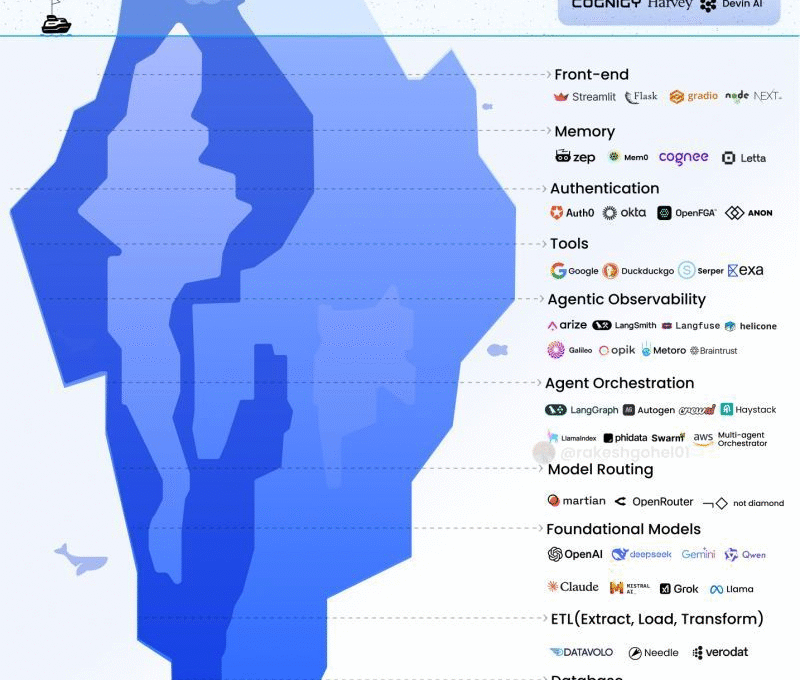Over the last year, you’ve likely seen the term “AI Agent” surface in dozens of product announcements, Twitter threads, VC decks, and even startup job descriptions. Many assume it’s just a slick front-end bolted onto ChatGPT or any LLM – a glorified chatbot with a task-specific wrapper.
This couldn’t be further from the truth.
AI agents represent a paradigm shift in intelligent system design — far beyond being a conversational UI. They are autonomous, iterative, and multi-modal decision-making entities that perceive, plan, and act to complete complex tasks with minimal human input.
Let’s unpack what truly defines an AI agent and why they are emerging as a foundational building block of the next-gen digital world.
What Exactly is an AI Agent?
At its core, an AI agent is an autonomous system that can:
- Perceive its environment (via APIs, sensors, or user inputs)
- Reason and plan (decide what to do next)
- Act (execute the next step via tools or environments)
- Learn (improve performance over time)
While ChatGPT is conversational and reactive, an AI agent is goal-driven and proactive.
Think of an agent not as an answer machine, but as a problem-solver. You tell it what you want done — it figures out how to do it.
The Core Components of an AI Agent
A robust AI agent typically includes:
- Planner / Orchestrator
Breaks high-level tasks into subgoals. Uses chain-of-thought prompting, hierarchical decision trees, or planning algorithms like STRIPS. - Memory Module
Retains long-term context, historical outcomes, and meta-learnings (e.g., what failed in prior runs). Tools: vector databases, episodic memory structures. - Tool Use / Actuator Layer
Connects to APIs, databases, browsers, or even hardware to act in the real world. Popular frameworks like LangChain or OpenAgents enable these tool interactions. - Self-Reflection / Feedback Loop
Agents often evaluate their own outputs (“Was my plan successful?”), compare results, and retry with refinements — an emerging feature called reflexion. - Environment Interface
The sandbox in which the agent operates — could be a browser, cloud platform, spreadsheet, simulator, or real-world system (like robotics).
AI Agent ≠ Prompt Engineering
While prompt engineering is useful for guiding LLMs, AI agents transcend prompts. They require:
- Multi-step execution
- State tracking
- Decision branching
- Tool chaining
Agents like AutoGPT, BabyAGI, CrewAI, and enterprise frameworks like OpenInterpreter show how agents can independently surf the web, run code, update spreadsheets, query APIs, and more — all in one chain of thought.
Real-World Industry Use Cases
Let’s look at some industry-specific applications of AI agents:
Enterprise Automation
- Agents that generate and test marketing campaigns across channels
- Finance agents that reconcile invoices, detect fraud, and generate reports
Healthcare
- Patient-follow-up agents that schedule appointments, send reminders, and summarize visit notes
- Agents that monitor vital signs and trigger alerts or interventions
Travel & Hospitality
- Dynamic pricing agents that monitor competitors and adjust rates in real time
- AI concierges that manage bookings, rebooking, and even upselling services autonomously
Consulting & Knowledge Work
- Research agents that scrape public reports, summarize findings, and draft client briefs
- Internal support agents that solve employee queries across HR, IT, and Operations
So Why the Misconception?
Because many agent interfaces are chat-based, they’re easily mistaken as “ChatGPT with buttons.” But the underlying architecture involves reasoning loops, memory, retrieval, and multi-agent collaboration.
In fact, companies like Devin AI (the first “AI Software Engineer”) and MultiOn (personal web browsing assistant) are showing that agents can match or even surpass junior human performance in specific tasks.
I came across an interesting break down of AI Agents written by Andreas.
1️⃣ 𝗙𝗿𝗼𝗻𝘁-𝗲𝗻𝗱 – The user interface, but that’s just the surface.
2️⃣ 𝗠𝗲𝗺𝗼𝗿𝘆 – Managing short-term and long-term context.
3️⃣ 𝗔𝘂𝘁𝗵𝗲𝗻𝘁𝗶𝗰𝗮𝘁𝗶𝗼𝗻 – Identity verification, security, and access control.
4️⃣ 𝗧𝗼𝗼𝗹𝘀 – External plugins, search capabilities, integrations.
5️⃣ 𝗔𝗴𝗲𝗻𝘁𝗶𝗰 𝗢𝗯𝘀𝗲𝗿𝘃𝗮𝗯𝗶𝗹𝗶𝘁𝘆 – Monitoring, logging, and performance tracking.
6️⃣ 𝗔𝗴𝗲𝗻𝘁 𝗢𝗿𝗰𝗵𝗲𝘀𝘁𝗿𝗮𝘁𝗶𝗼𝗻 – Multi-agent coordination, execution, automation.
7️⃣ 𝗠𝗼𝗱𝗲𝗹 𝗥𝗼𝘂𝘁𝗶𝗻𝗴 – Directing queries to the right AI models.
8️⃣ 𝗙𝗼𝘂𝗻𝗱𝗮𝘁𝗶𝗼𝗻𝗮𝗹 𝗠𝗼𝗱𝗲𝗹𝘀 – The LLMs that power the agent’s reasoning.
9️⃣ 𝗘𝗧𝗟 (𝗘𝘅𝘁𝗿𝗮𝗰𝘁, 𝗧𝗿𝗮𝗻𝘀𝗳𝗼𝗿𝗺, 𝗟𝗼𝗮𝗱) – Data ingestion and processing pipelines.
🔟 𝗗𝗮𝘁𝗮𝗯𝗮𝘀𝗲 – Vector stores and structured storage for knowledge retention.
1️⃣1️⃣ 𝗜𝗻𝗳𝗿𝗮𝘀𝘁𝗿𝘂𝗰𝘁𝘂𝗿𝗲/𝗕𝗮𝘀𝗲 – Compute environments and cloud execution.
1️⃣2️⃣ 𝗖𝗣𝗨/𝗚𝗣𝗨 𝗣𝗿𝗼𝘃𝗶𝗱𝗲𝗿𝘀 – The backbone of AI model execution.
Image credits: Rakesh
In summary, AI agents aren’t just “smart chatbots” — they’re full-stack AI systems requiring seamless orchestration across multiple layers. 𝗧𝗵𝗲 𝘄𝗶𝗻𝗻𝗲𝗿𝘀? 𝗧𝗵𝗼𝘀𝗲 𝘄𝗵𝗼 𝗯𝗿𝗶𝗱𝗴𝗲 𝗔𝗜 𝗰𝗼𝗺𝗽𝗹𝗲𝘅𝗶𝘁𝘆 𝘄𝗶𝘁𝗵 𝗿𝗲𝗮𝗹 𝗯𝘂𝘀𝗶𝗻𝗲𝘀𝘀 𝘃𝗮𝗹𝘂𝗲 𝗯𝘆 𝗺𝗮𝘀𝘁𝗲𝗿𝗶𝗻𝗴 𝗲𝗻𝗴𝗶𝗻𝗲𝗲𝗿𝗶𝗻𝗴 𝗰𝗼𝗺𝗽𝗹𝗲𝘅𝗶𝘁𝘆 𝗮𝗻𝗱 𝗱𝗲𝗹𝗶𝘃𝗲𝗿𝗶𝗻𝗴 𝘀𝗲𝗮𝗺𝗹𝗲𝘀𝘀 𝗨𝗫 𝘀𝗶𝗺𝗽𝗹𝗶𝗰𝗶𝘁𝘆 𝗳𝗼𝗿 𝘂𝘀𝗲𝗿𝘀.
The Future is Agentic
We’re moving from “Assistive AI” (ChatGPT answering your questions) to “Agentic AI” (AI doing your tasks).
The implications?
- Rethinking UX — what if you don’t need to click 50 times?
- Redefining jobs — which workflows will be owned by agents?
- Reinventing SaaS — what if your CRM, ERP, and BI tools were all run by AI agents?
Final Thoughts
Calling AI agents “just a ChatGPT with some polish” is like calling a smartphone “just a phone with a screen.” It misses the innovation beneath.
True AI agents are autonomous problem solvers, environment-aware, tool-using, and self-improving systems. They are reshaping software, workflows, and businesses from the ground up.
And this is just the beginning.
